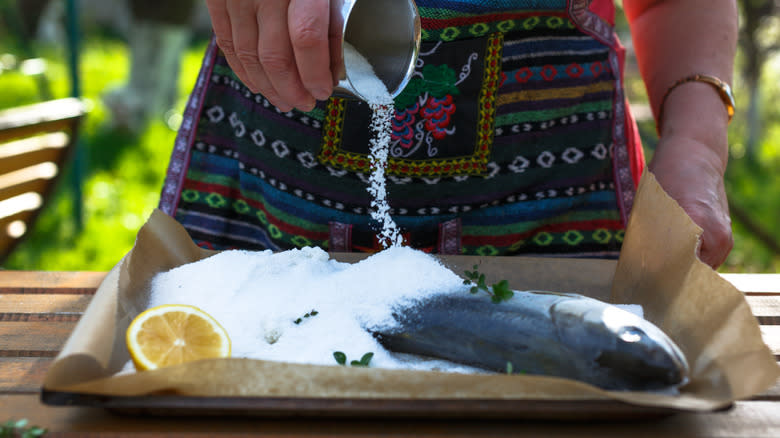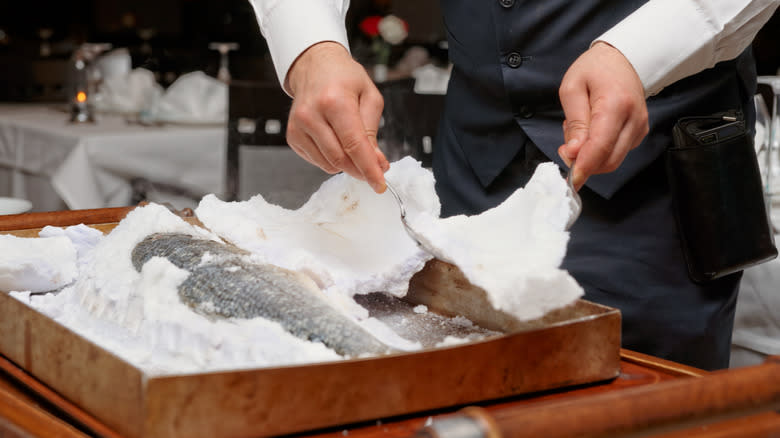The Absolute Best Salt To Use When Salt-Baking

Salt-baking, as the name suggests, is the practice of baking food in a thick crust of salt. This ancient technique is documented as far as the 4th century B.C.E. in the Mediterranean region, and there are examples of foods cooked in this simple way in many cultures around the world. Salt mixed with water or another binding agent like egg whites is patted thickly around a whole fish, chicken, or even vegetables before roasting. Inside the case of salt, the food steams gently, protected from heat. But make no mistake, this method will use a lot of salt. This is not the time to break out your fancy finishing salts -- the absolute best salt to use is inexpensive kosher salt or table salt.
Lovely salt crystals like Maldon Salt are meant to add crunch to finished foods, and they are pricey due to the harvesting methods. Mixing them up with water for a crust would be a total waste. The purpose of this crust is to insulate the food, and although a trace of saltiness will linger, you'll be discarding all this salt, so using precious flavored salt would also be a waste. For many of the same reasons we suggest table salt for baking, it's also the best choice for a salt crust. The salt will dissolve nicely to form an easy to handle crust and you won't have to pay a fortune for it.
Read more: Vinegar Cooking Hacks You'll Wish You Knew Sooner
Why Salt-Bake Anyway?

Chefs are willing to use pounds and pounds of salt to salt-bake foods knowing the salt will get discarded -- one of the few times a seasoning is purposely bought just to throw away -- and that's because of the amazing result of the technique for both taste and texture. Delicate meats like fish or a whole chicken encased in salt crust will steam to juicy perfection while the crust traps all the flavors inside. Nothing is lost to escaping steam or watered down in poaching liquid, and any aromatics stuffed inside the fish like lemon or herbs are also concentrated.
When roasting vegetables like potatoes or beets in salt crust, the salt not only concentrates subtle flavors of the roots but lightly seasons them. Because the salt protects the food from the oven's heat, the outer skin layers have a chance to roast fully without drying out and that develops a new depth of flavor as well. Those effects make tossing away the salt crust all worth it, as long as you're not using your more expensive salt.
Read the original article on Tasting Table.


